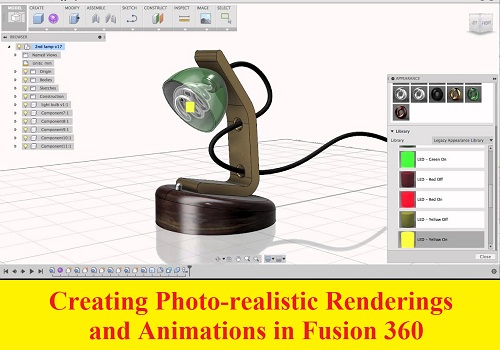


Full, uncompressed video renders can measure tens of gigabytes in size. Still, formats take up less space than their video counterparts. Renderings are graphically rich files, which can consume plenty of disk or online drive space. If you intend to mimic the real world graphically, familiar hues will strongly resonate with your audience. We know how these elements of nature should look from firsthand experience, and gamers will have similar expectations. You can use color to striking effect when emulating earthly features such as sunsets, grassy fields, rocky cliffs, or breaking waves. The in-game environment drives player immersion and draws them in. Naturally, our renderings can encompass more than just physical products - take the world of video game design, for example. Getting an accurate sense of your final product’s appearance in different lighting conditions rests with proper tone matching. We’ve touched on the importance of shadows and lighting previously. What your customers see on the shelves or hold in their hands should reflect your renderings and vice versa. It’s certainly smart to create your renders as true to life as possible. These settings are subject to plenty of customization. We can essentially see how light sources from various angles interact with our designs in a 3D (realistic) environment. We achieve shadow mapping and other forms of shading with X-Y-Z matrices. Shadows follow a similar convention as lighting. Shadows and reflectivity are some of the main considerations when creating a realistic render. You want a rendering to reflect its physical counterpart as closely as possible - blurring the line between concept and reality.

On the rendering side, this helps a product appear more striking, adds depth, and injects a dose of realism. Professional photography studios and movie studios both add intrigue and realism to every shot by tinkering with lighting. One of the quickest ways to elevate a rendering is to inject some photorealism by incorporating the fundamentals of light and considering shadows and reflective surfaces. Incorporate Intelligent Lighting and Shadows Follow these five tips to create even better renderings: 1.

Beginners and even experienced professionals can improve their processes. Teams must consider how renderings can enhance their physical designs. Creative challenges present roadblocks, and workflow limitations can stunt productivity. However, creating detailed renderings isn’t always simple. Creating 3D renders helps bring projects to life and allows teams to produce numerous iterations in relatively short order. 4 min read Dirt bike rendering created with Fusion 360.ĭesigners and engineers may already know that rapid prototyping is crucial to getting products to market.


 0 kommentar(er)
0 kommentar(er)
